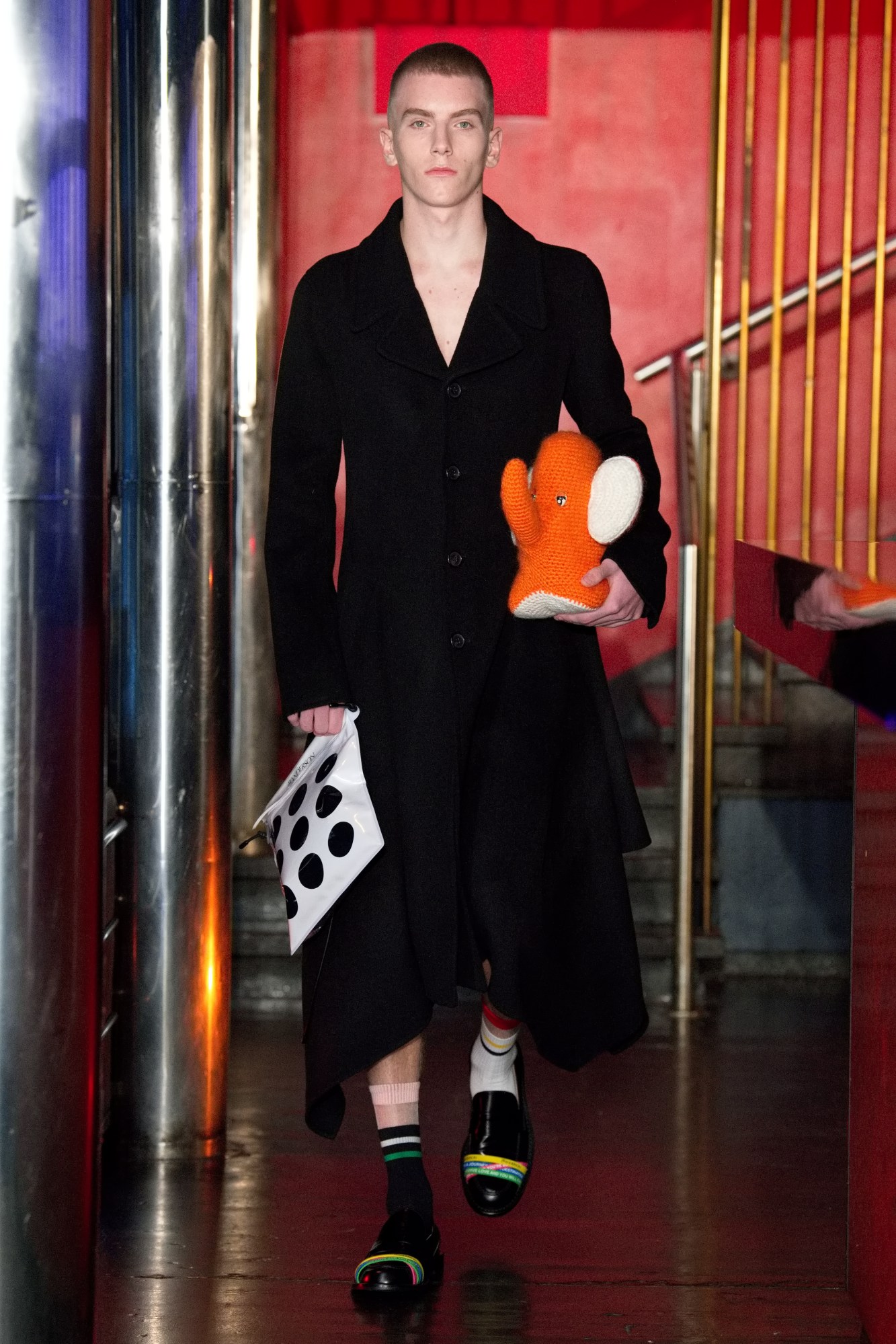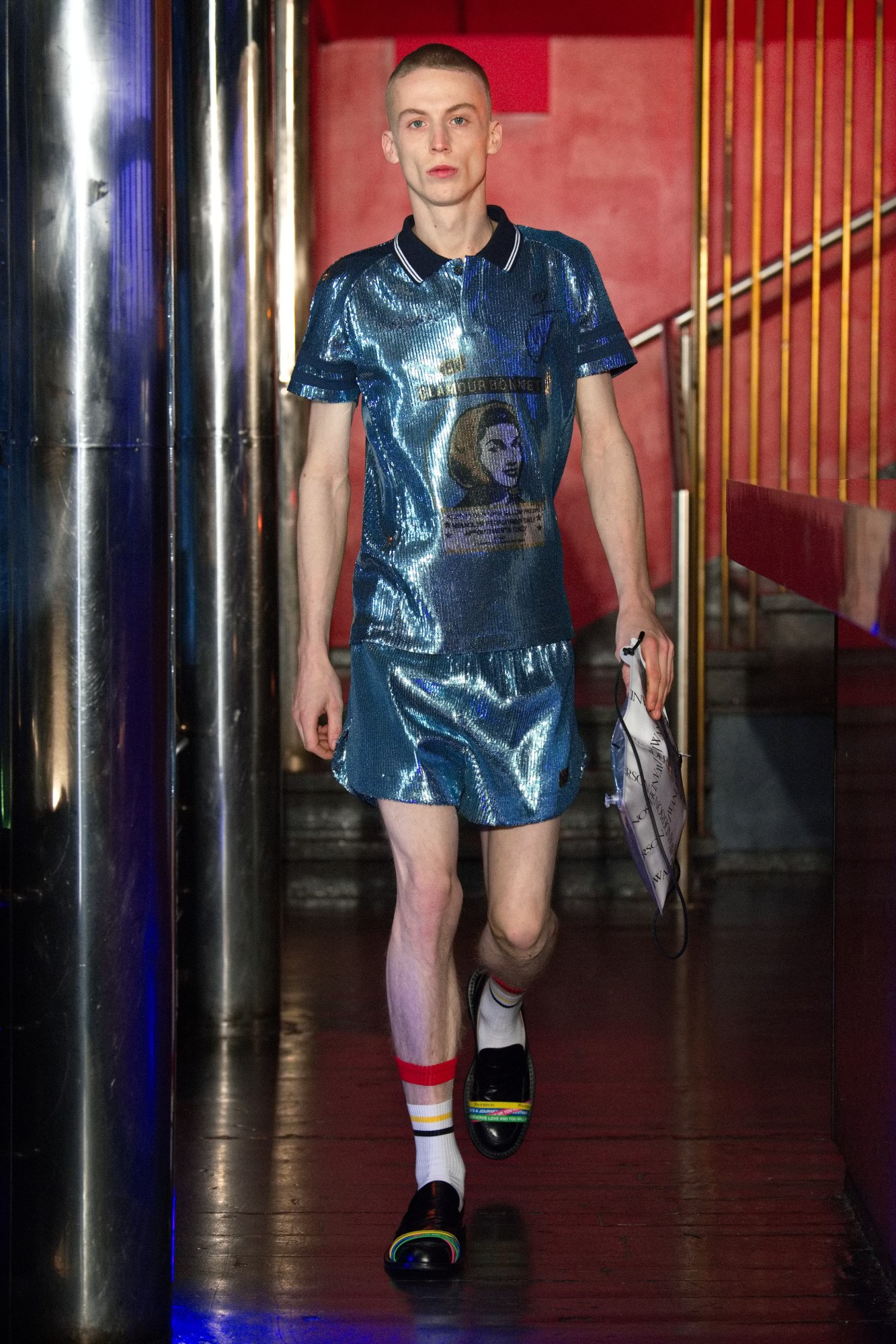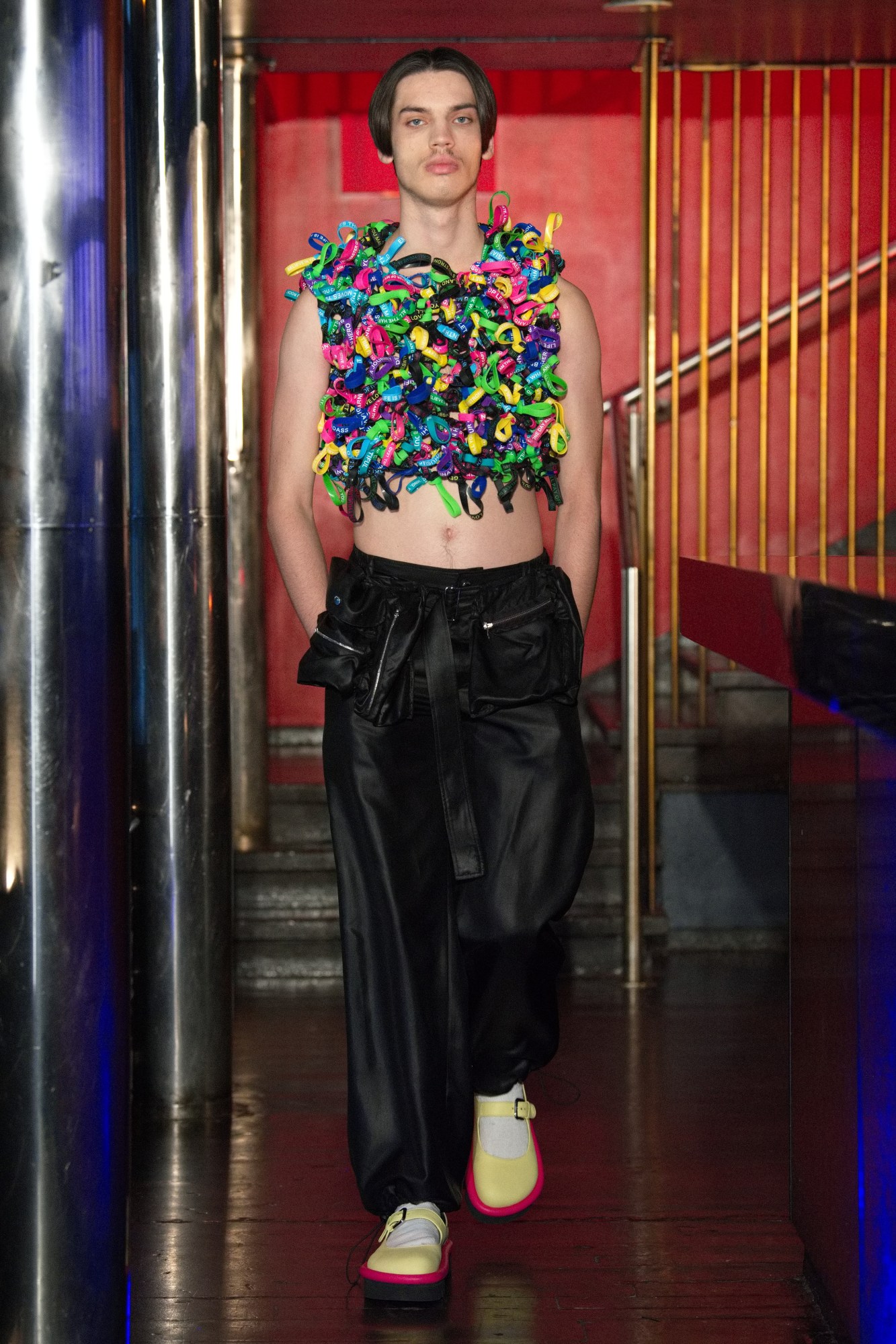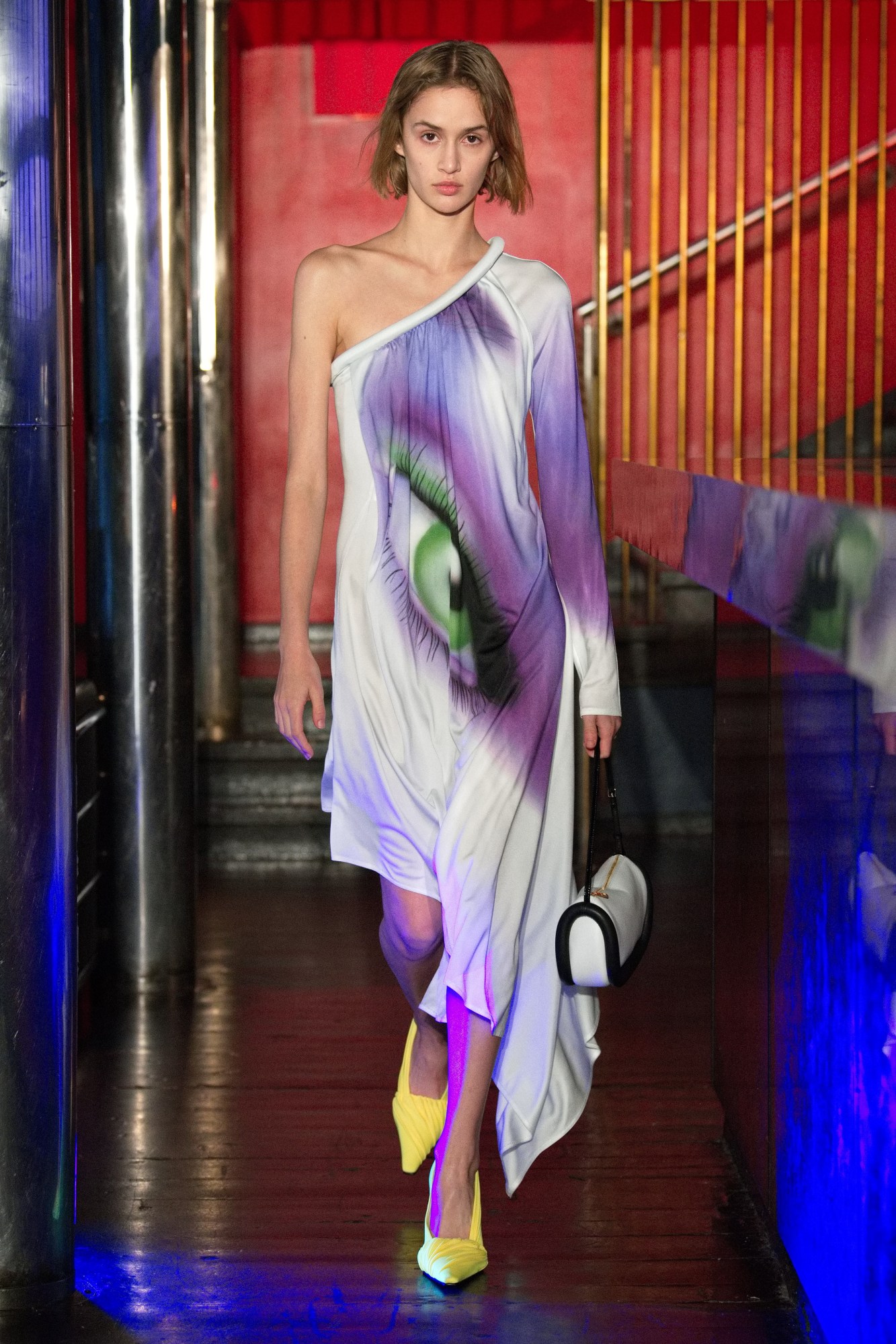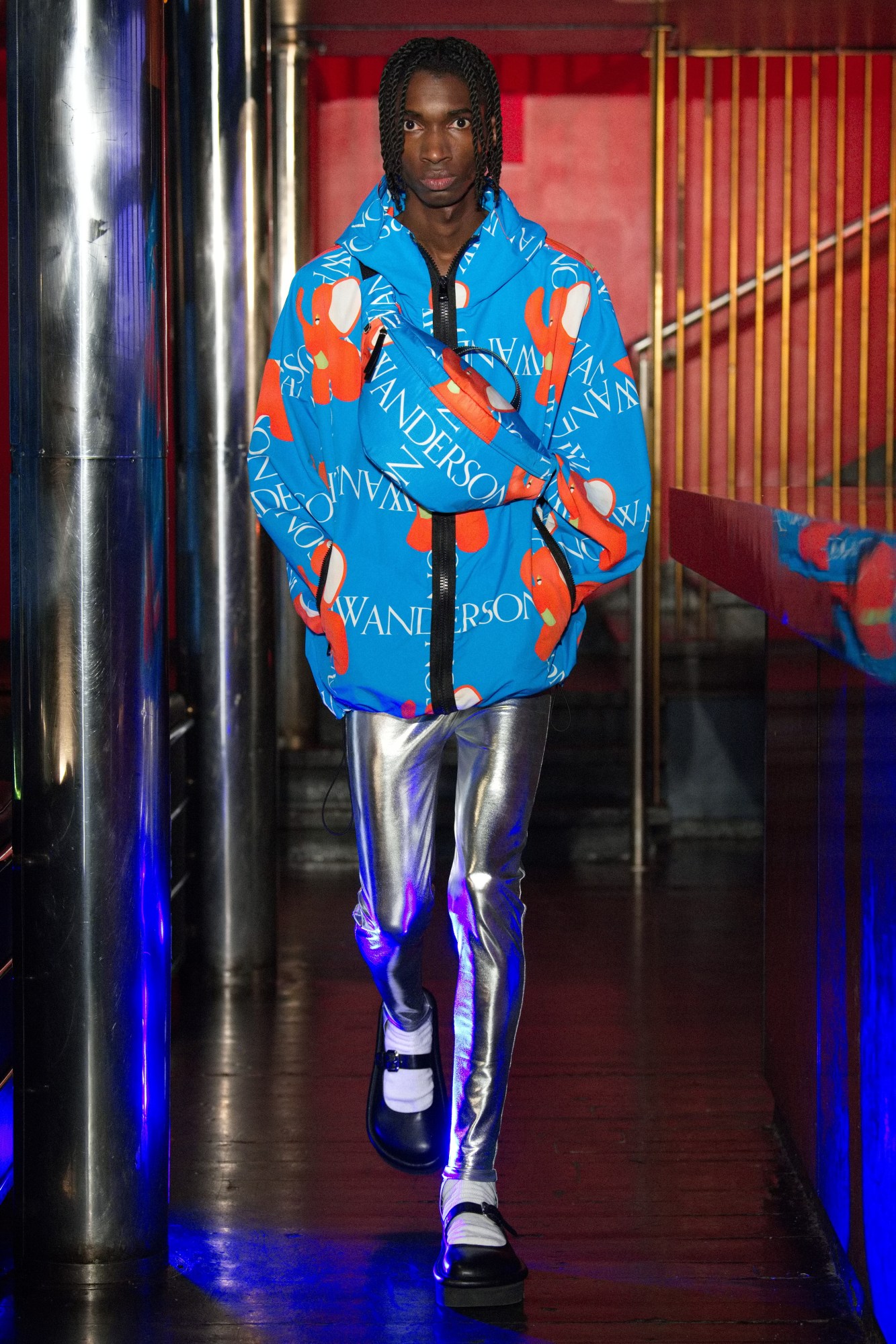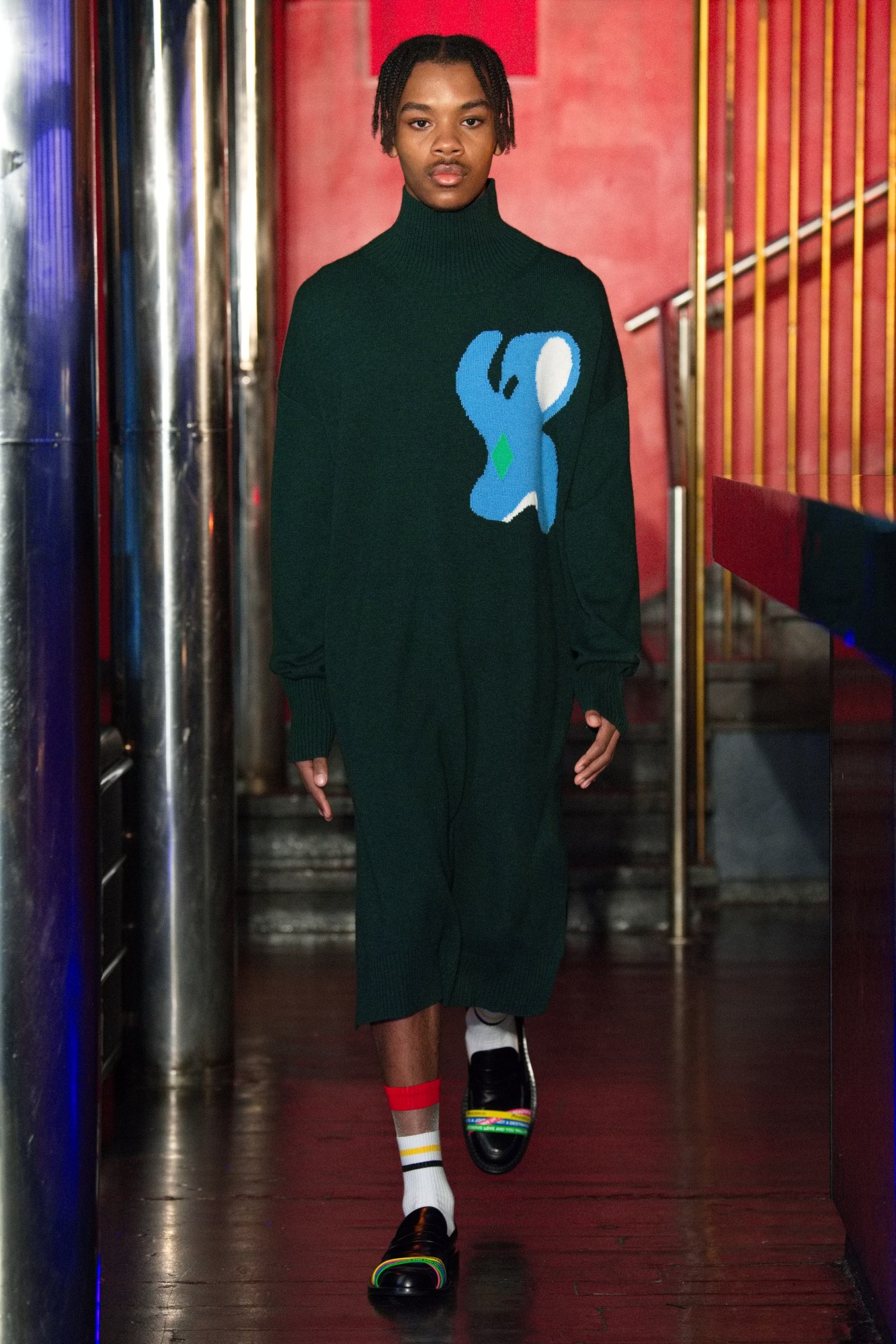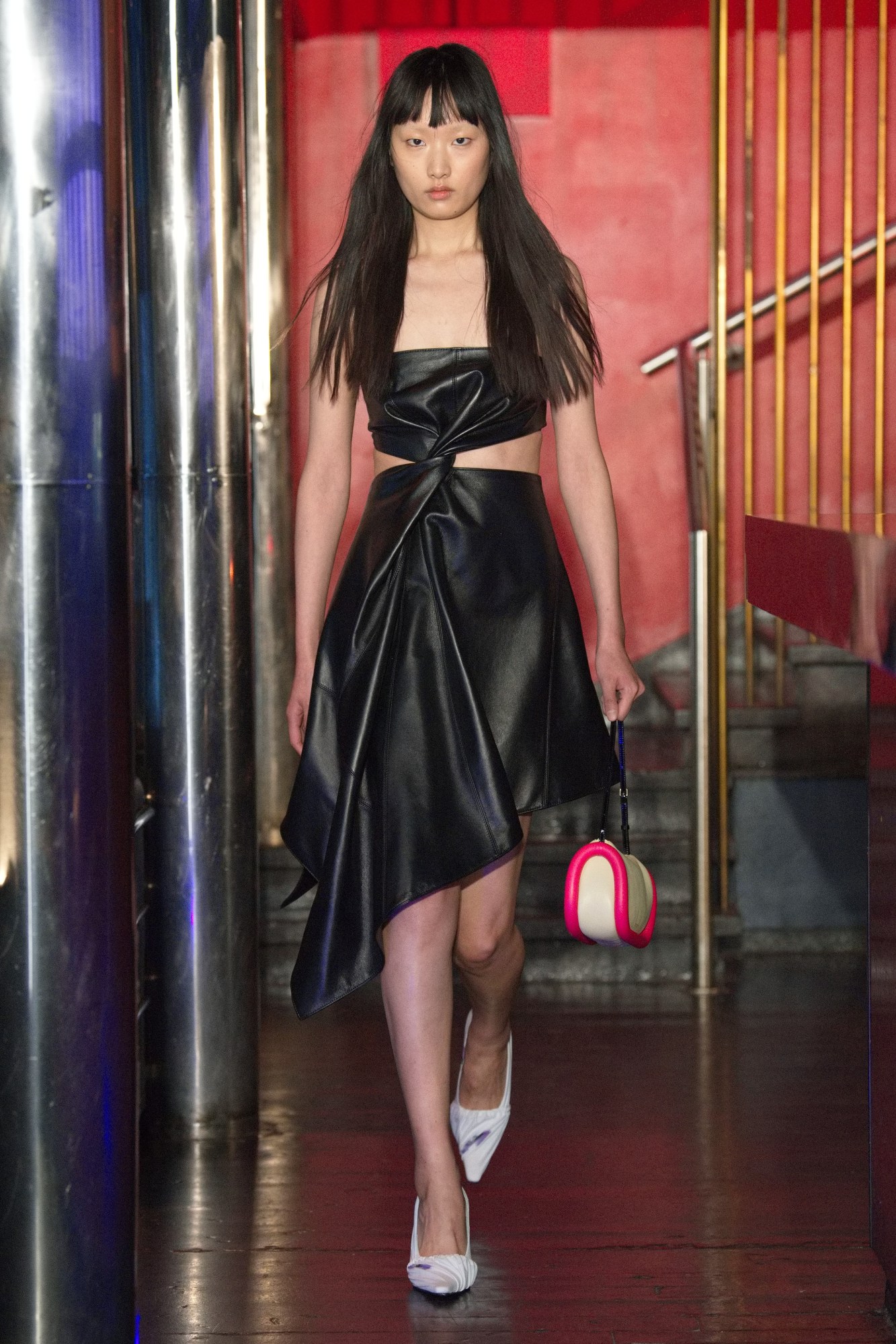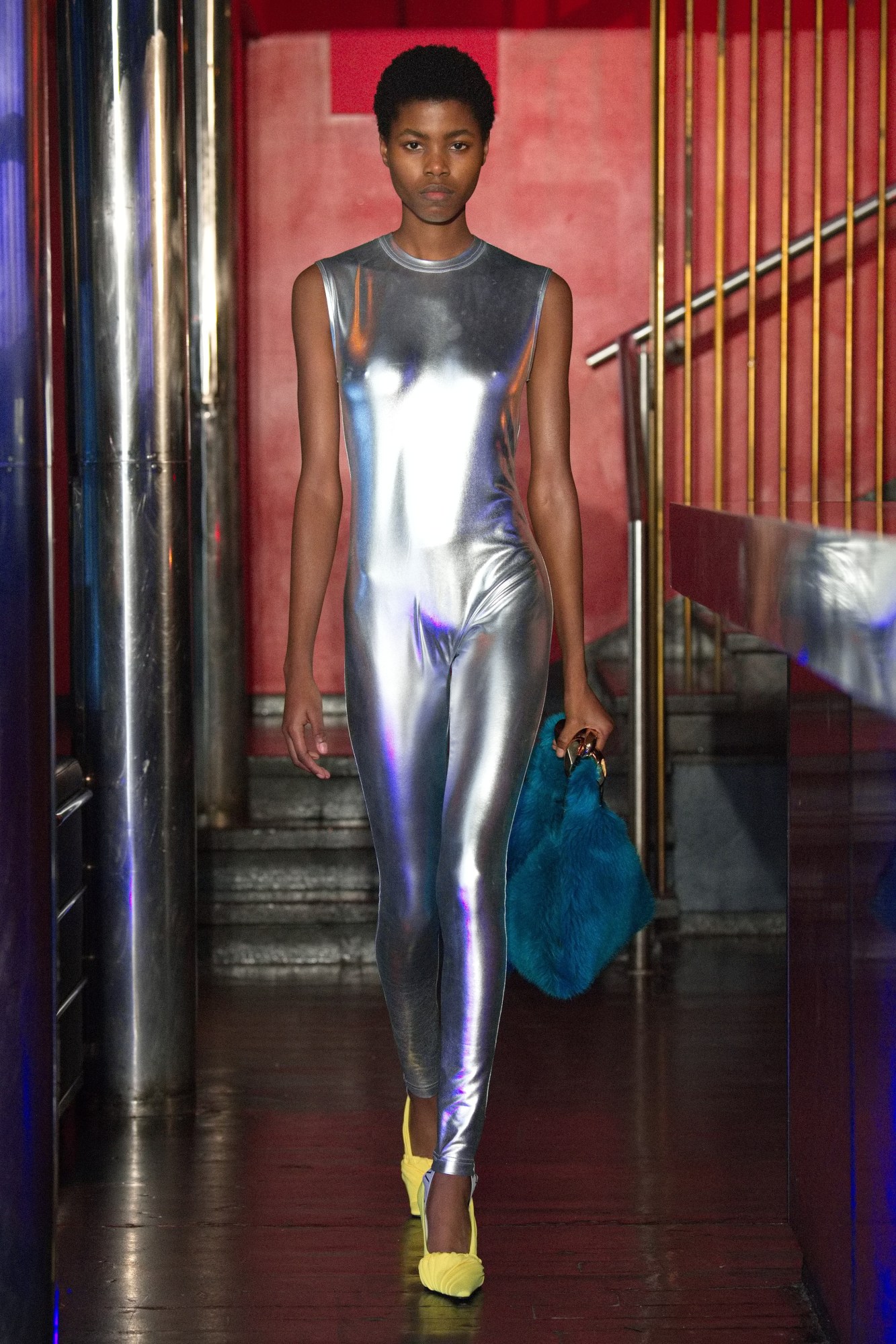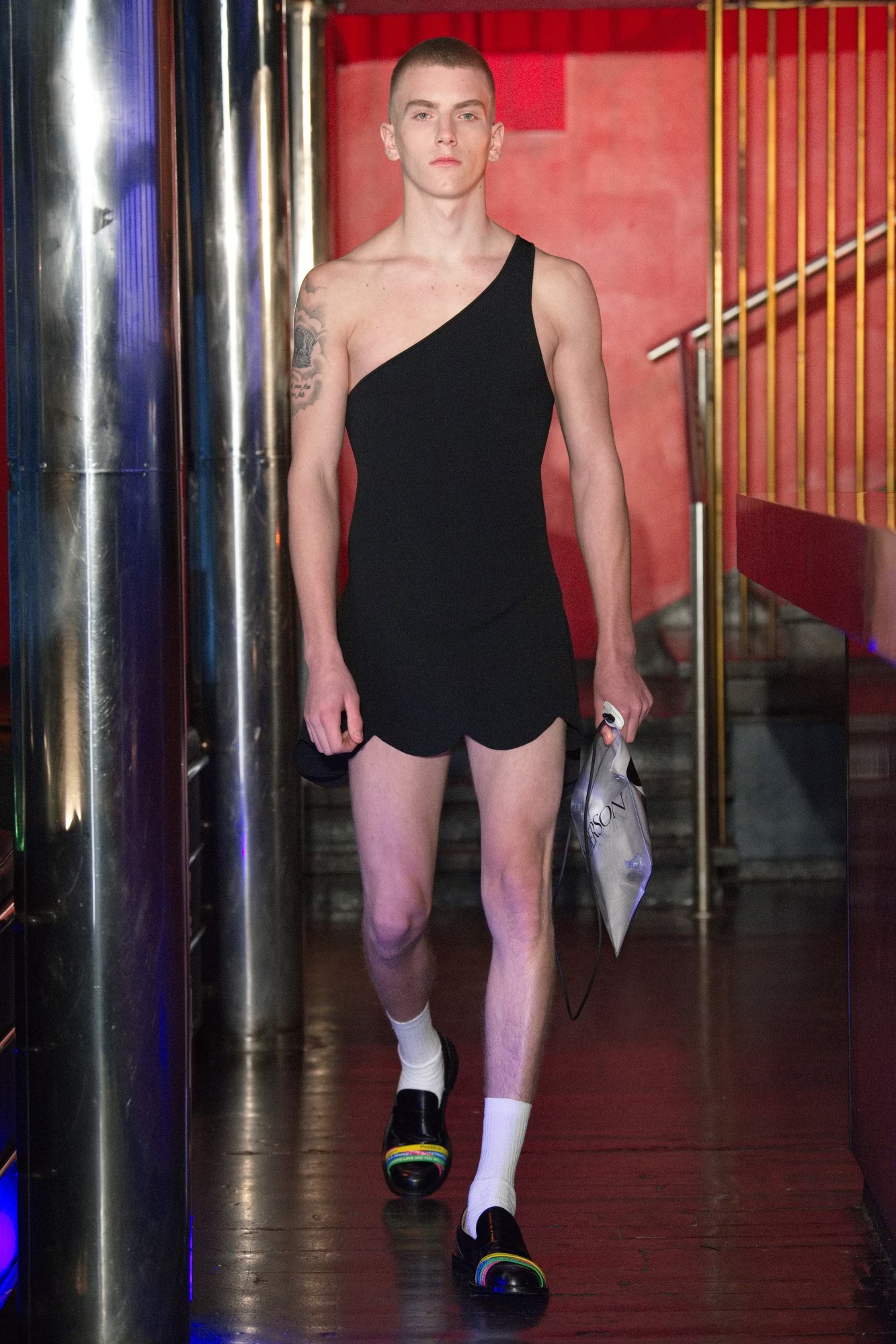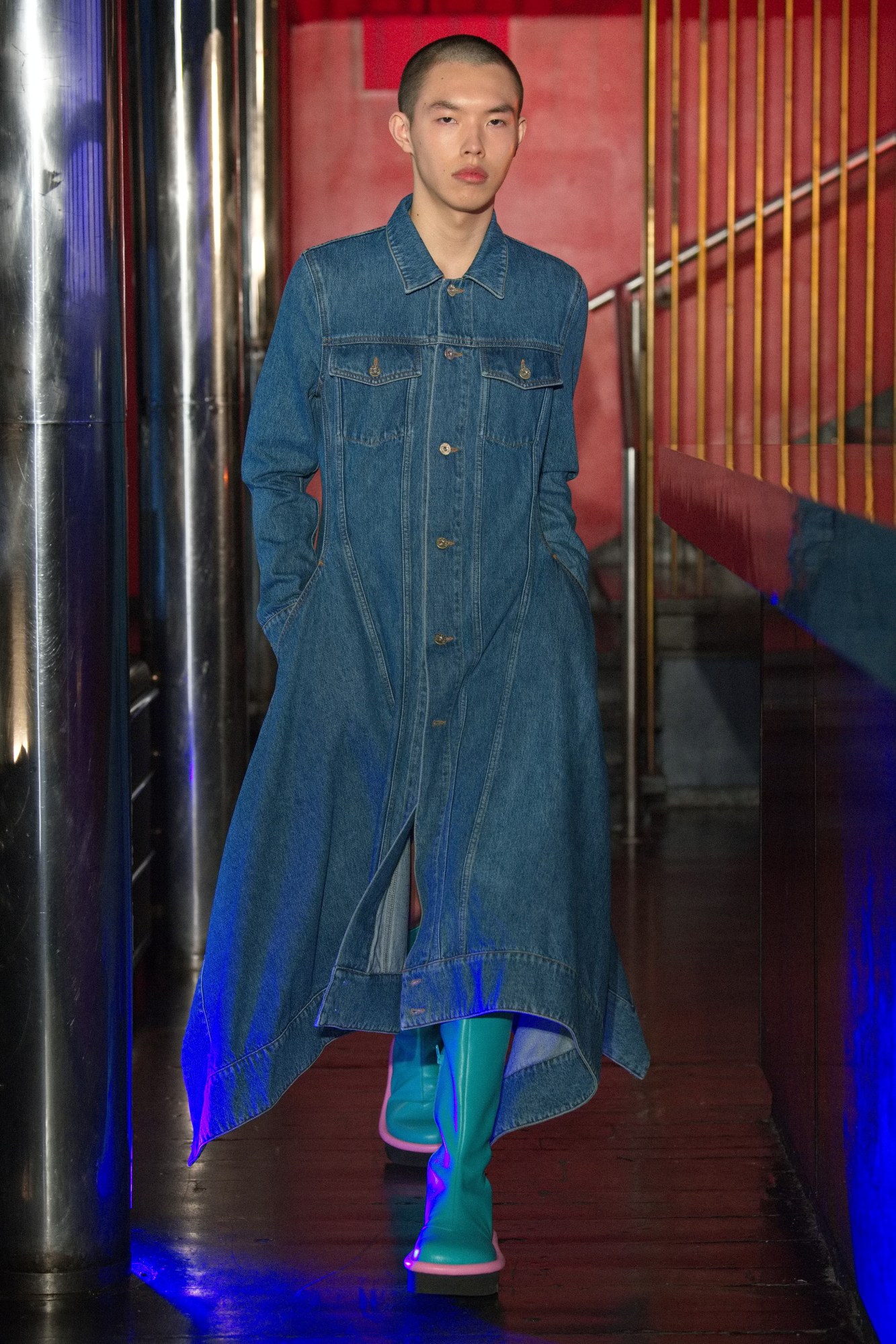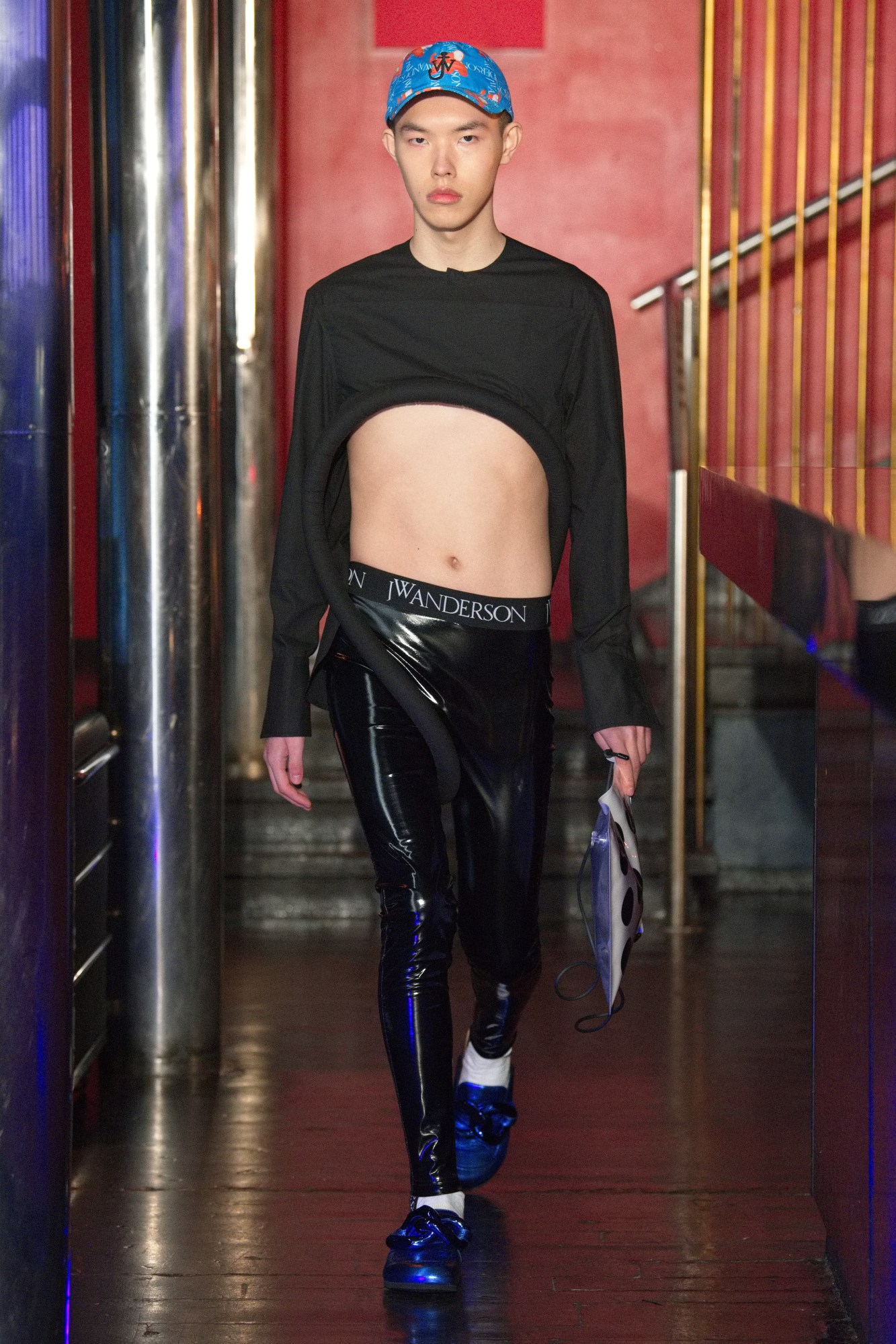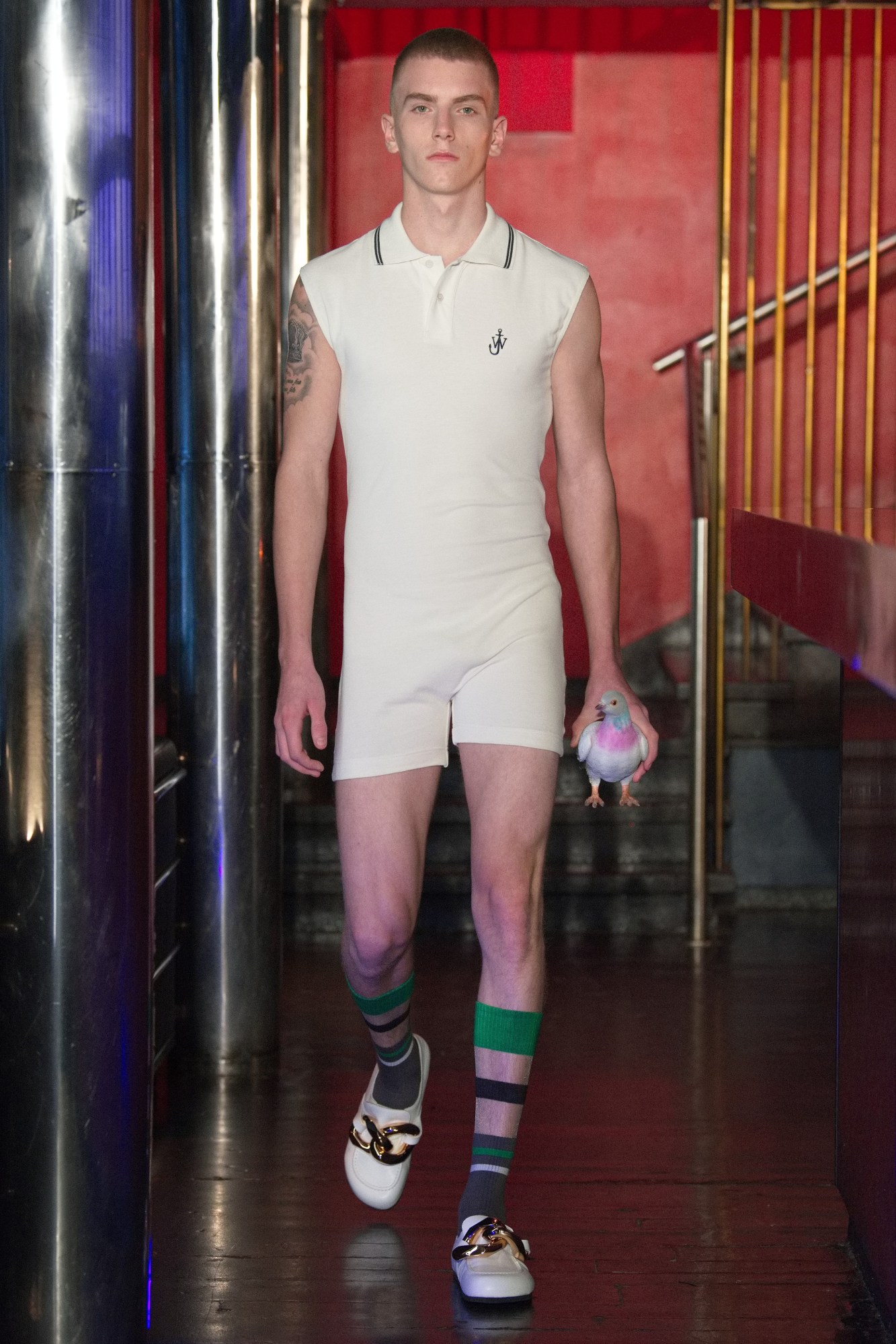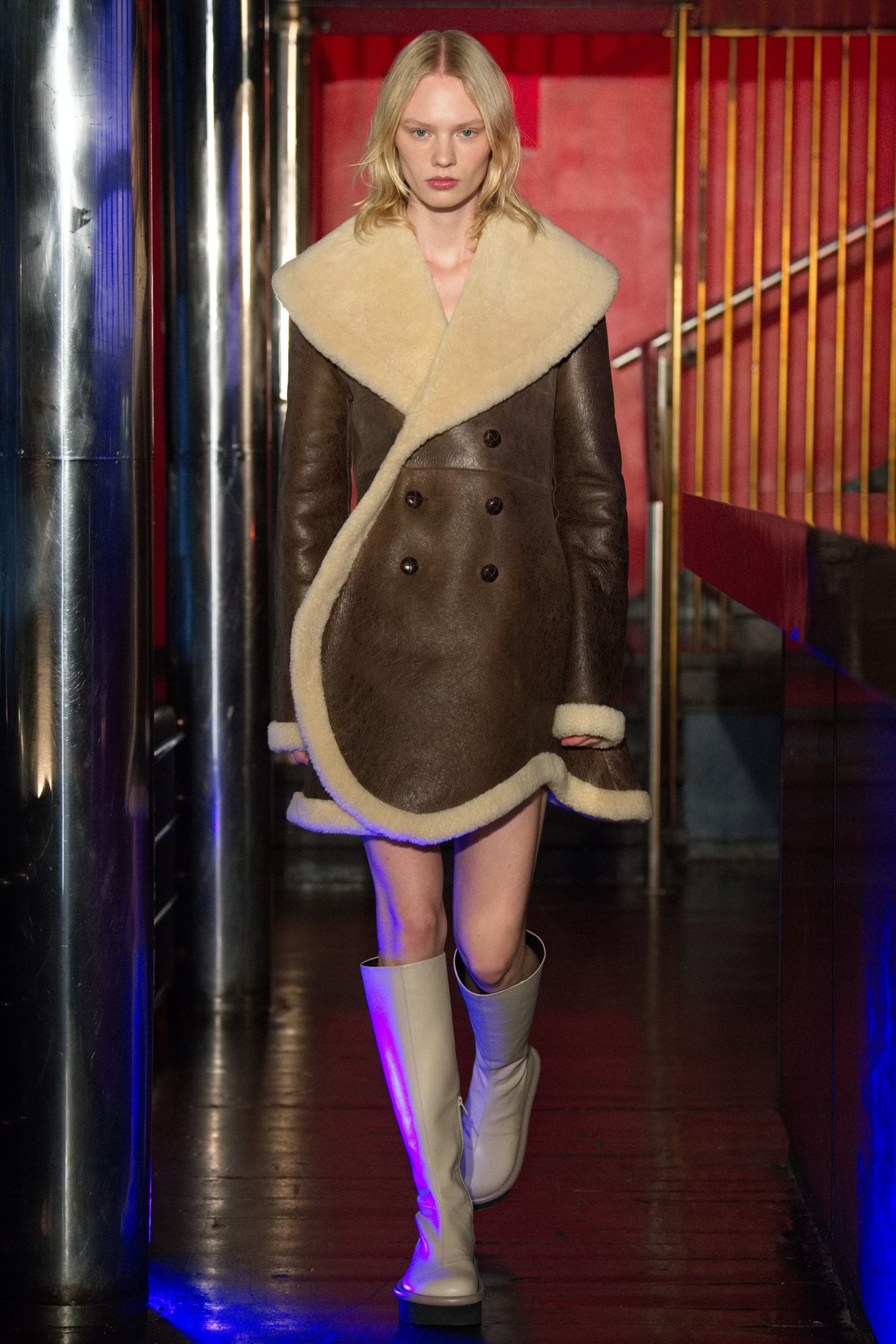Ahead of the JW Anderson AW22 ‘show’, in the chaotic rooms of the Scala nightclub in Kings Cross (the only way to describe it to out-of-towners is ‘mass’, a word that Jonathan Anderson is currently obsessed with) there is a vibrant atmosphere. People are running around, there’s hair and makeup happening where the dancefloor should be, neon strobe lights are darting all over the place. Tables are covered in pigeon-shaped clutch bags and ridiculous, knitted elephants. A sleeveless top woven from hundreds of brightly-coloured rubber wristbands swings from a rail. Bright, clashing prints and textures sit side-by-side — Zebra! Sequins! Lamé! — while models are tucking into lunch at the sticky-floored bar. It’s almost like the old days, back when backstage areas were as fabulous as front-of-house, and far less sanitised.
This all should have happened in Milan, where JW Anderson was meant to make a splash as the city’s new arrival on the MFW schedule, followed by a big party that the city’s fashion-conscious kids would have clambered to get into. Instead, Omicron has delayed those plans (they have been pushed back to June) and instead, the show is happening digitally — something which Jonathan has successfully avoided during the pandemic with his ingenious alternatives. So, here we are in a nightclub at 2PM, surrounded by his most irreverent collection to date.
For Jonathan, the word he started with was ‘silly’. “It’s a very British word,” he points out with glee. “Sometimes your parents will say: “Oh, don’t be so silly!” I like the idea of going back to a naive state of mind, so that it’s almost a blur of a vision of going out. Maybe it is fine to even project into a utopian vision of going out.”
Going out may seem silly to some, but for young people especially, it’s cathartic to give into the frivolity of hedonism, especially when everything else happening in the world feels so serious. This was an incredibly fun collection, ridiculous even. Pigeon-shaped clutches, for crying out loud! Silver catsuits — so tight and reflective, you could call them pigeon-smugglers. In fact, all together, the lineup looked like a group of boys and girls in a queue for some nightclub or foam party, albeit some of them in costume.
There were the buzzcut boys in polo tops, except the tops were actually dresses with undulating hooped hems or second-skin playsuits, and girls in sassy one-shouldered dresses and handbags slung over their shoulders. There were remnants of parka jackets, ready to be discarded at the cloakroom. It all felt a bit scally, but in a celebratory way. It has the youthful joy of getting ready to go out, the willingness to queue for a club like Scala, and the promise of an after-party at someone’s dorm. “Bits, pieces and fragments of youth, like confetti scattered around at a house party,” as the show notes put it. “Optimistic and fun,” is how Jonathan described it.
It’s interesting to consider that Jonathan was also thinking about hyper-masculinity, having watched a documentary about Cristiano Ronaldo (hence, the sequinned football shirts in minuscule proportions). Football is still such a strangely masculine pursuit — almost like what fashion is to gay men and women, some would argue. Jonathan said he was imagining the footballer on an empty pitch, not kicking a ball but doing the same movements — and he came to the conclusion that he would look like he were dancing.
There’s a nice through-line there, but ultimately Jonathan is no stranger to provocation. Almost a decade ago, he sent out male models in wool micro-skirts and ruffled tunic dresses in his AW13 show, long before gender-fluidity was common parlance on the front row. It bombed in terms of sales, and mainstream media coverage, but succeeded in cementing him as a provocateur. Oh, how times have changed! Here was a hint of that collection, but with so much more irreverence. By seemingly toying with the notions of taste, and perhaps even class, Jonathan managed to unpack something interesting to say about gender — which is no mean feat in 2022.
